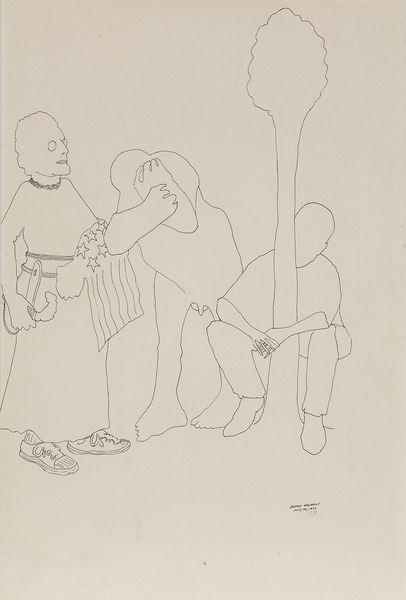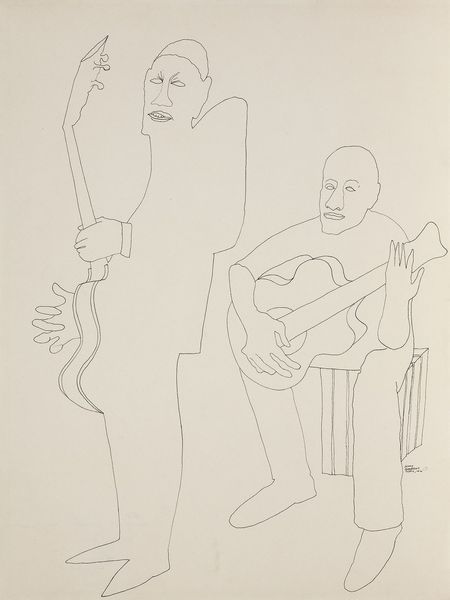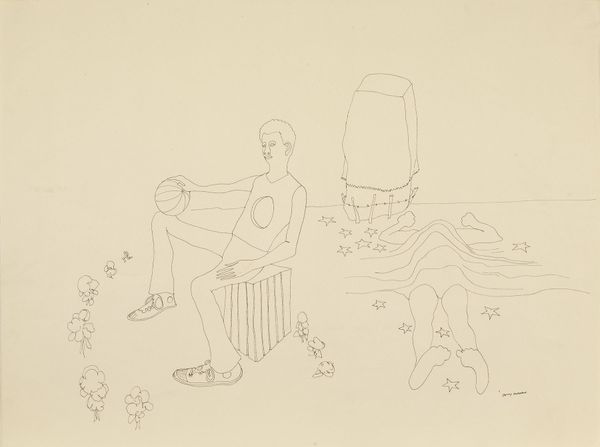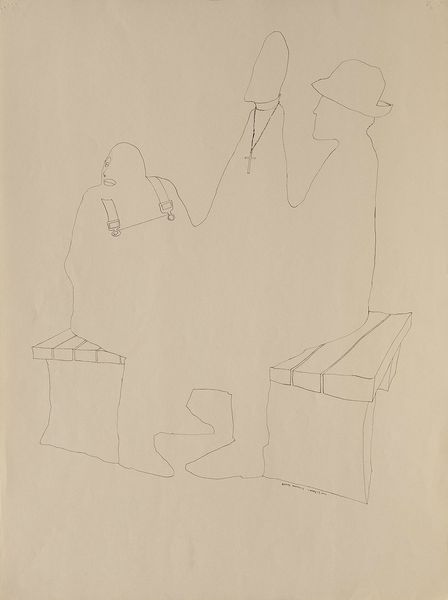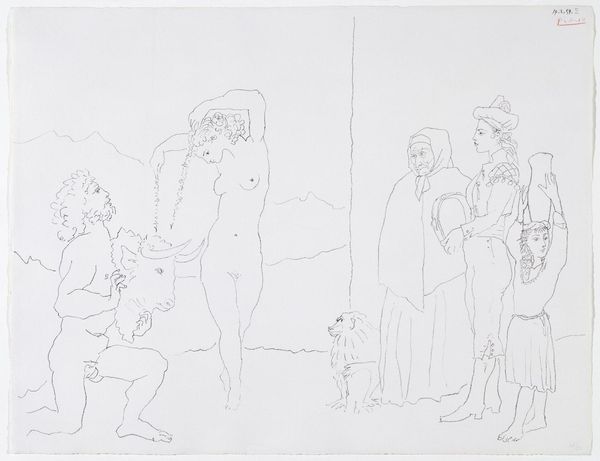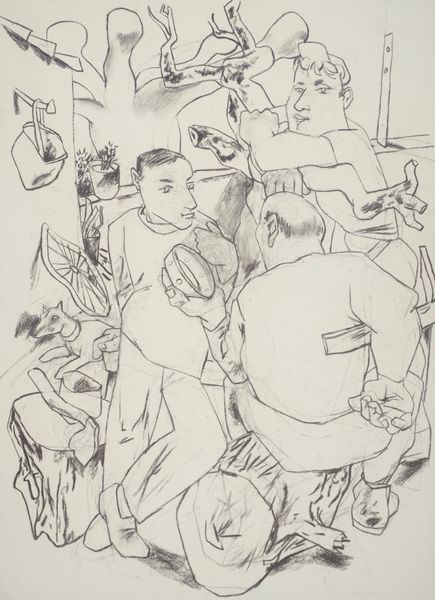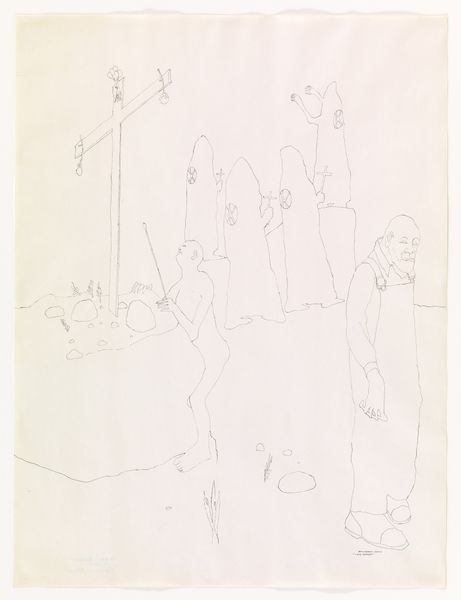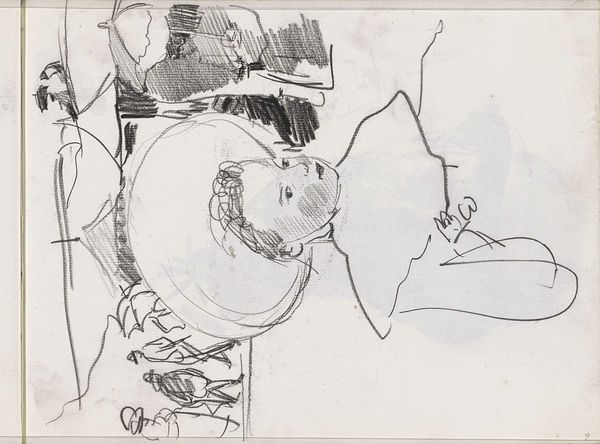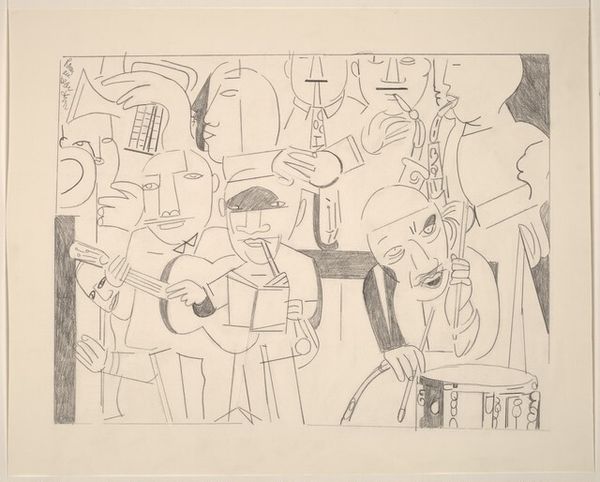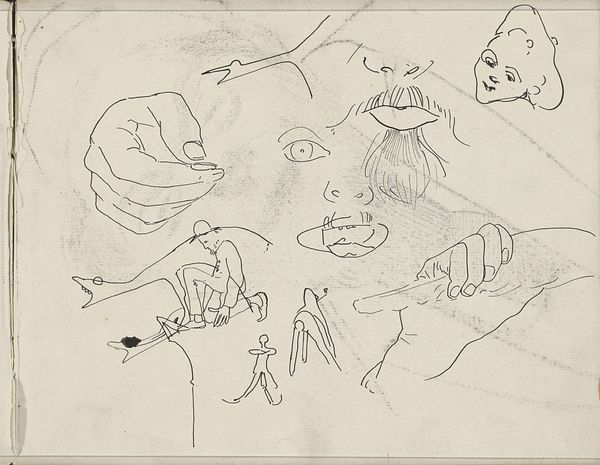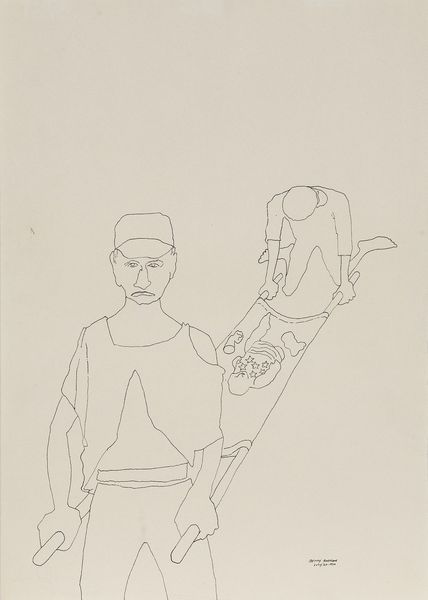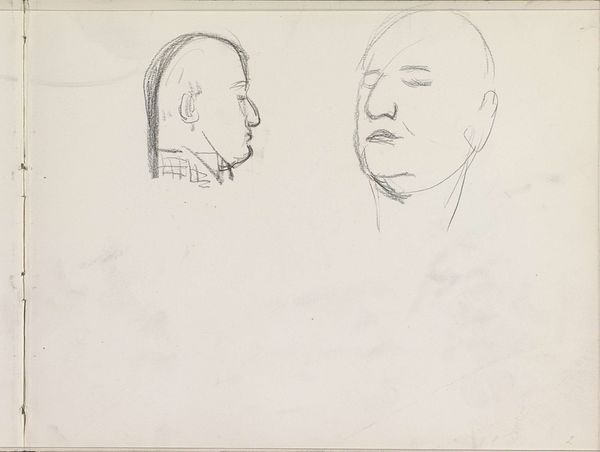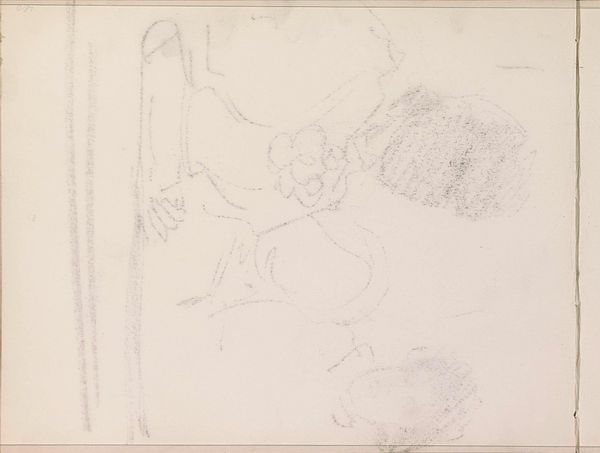
drawing, graphite, pen
#
portrait
#
drawing
#
figuration
#
graphite
#
pen
#
portrait drawing
Dimensions: 18 x 24.5 cm
Copyright: Benny Andrews,Fair Use
Curator: Benny Andrews created this work, “American and Mother (Study for Symbols),” in 1970. The medium is graphite and pen on paper, presented as a portrait-style drawing. What’s your first impression? Editor: Austere. The use of thin lines creates a sense of fragility, almost as if the scene is about to dissolve before our eyes. The figures evoke unease with their disjointed, symbolic forms. Curator: Andrews was deeply engaged in the Civil Rights Movement and often used his art to address issues of identity, race, and political power. His work frequently offers commentary on the complexities and contradictions within American society. Given that, how do you interpret the symbolism here? Editor: I see layers of cultural baggage. The figure draped in the American flag, yet possessing a skeletal face, could symbolize a decaying or corrupt version of the nation, perhaps revealing anxieties about mortality and the loss of original ideals. Then, you have this crouched figure of supposed shame—a figure, in my view, symbolic of systemic guilt, with that hunched body obscuring a full view, indicating some repression or concealment of truth. Curator: And placing those figures next to a portrait of a suited individual--who has their arms crossed? That defiant posture says so much. He is seemingly at odds with both figures beside him. Andrews uses these portraits as an opportunity to explore and lay bare historical injustices—especially as experienced in America at that time. The arrangement, as well as the drawing's stark style, offers a very complex interpretation of race, class, gender, and the American ideal at that time. Editor: The fact that this is a study invites the viewer into Andrews's thought process. Each element feels like a carefully considered symbol, inviting a continued dissection of identity in times of sociopolitical upheaval. Curator: The drawing almost acts as a stage, or a diorama, upon which Andrews stages a theatrical display of figures embroiled in ideological tension. Editor: Ultimately, the artwork functions as an active dialogue, which questions the meaning we impose on national symbols and prompts a deeper contemplation about where true power resides. Curator: An incisive comment on our times. Andrews continues to resonate because he knew the past to look forward.
Comments
No comments
Be the first to comment and join the conversation on the ultimate creative platform.
